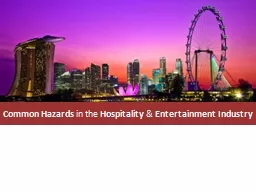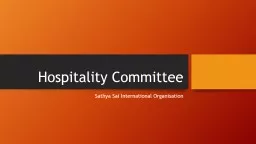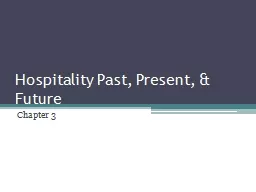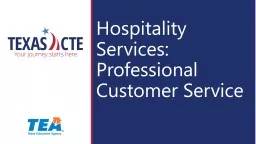PPT-Hospitality & Entertainment Industry sectors
Author : phoebe-click | Published Date : 2018-12-12
Hotel and Accommodation services Food and Beverage Service Activities Convention Trade show Concert and other Event Organisers Arts Entertainment and Recreation
Presentation Embed Code
Download Presentation
Download Presentation The PPT/PDF document "Hospitality & Entertainment Industry..." is the property of its rightful owner. Permission is granted to download and print the materials on this website for personal, non-commercial use only, and to display it on your personal computer provided you do not modify the materials and that you retain all copyright notices contained in the materials. By downloading content from our website, you accept the terms of this agreement.
Hospitality & Entertainment Industry sectors: Transcript
Download Rules Of Document
"Hospitality & Entertainment Industry sectors"The content belongs to its owner. You may download and print it for personal use, without modification, and keep all copyright notices. By downloading, you agree to these terms.
Related Documents














